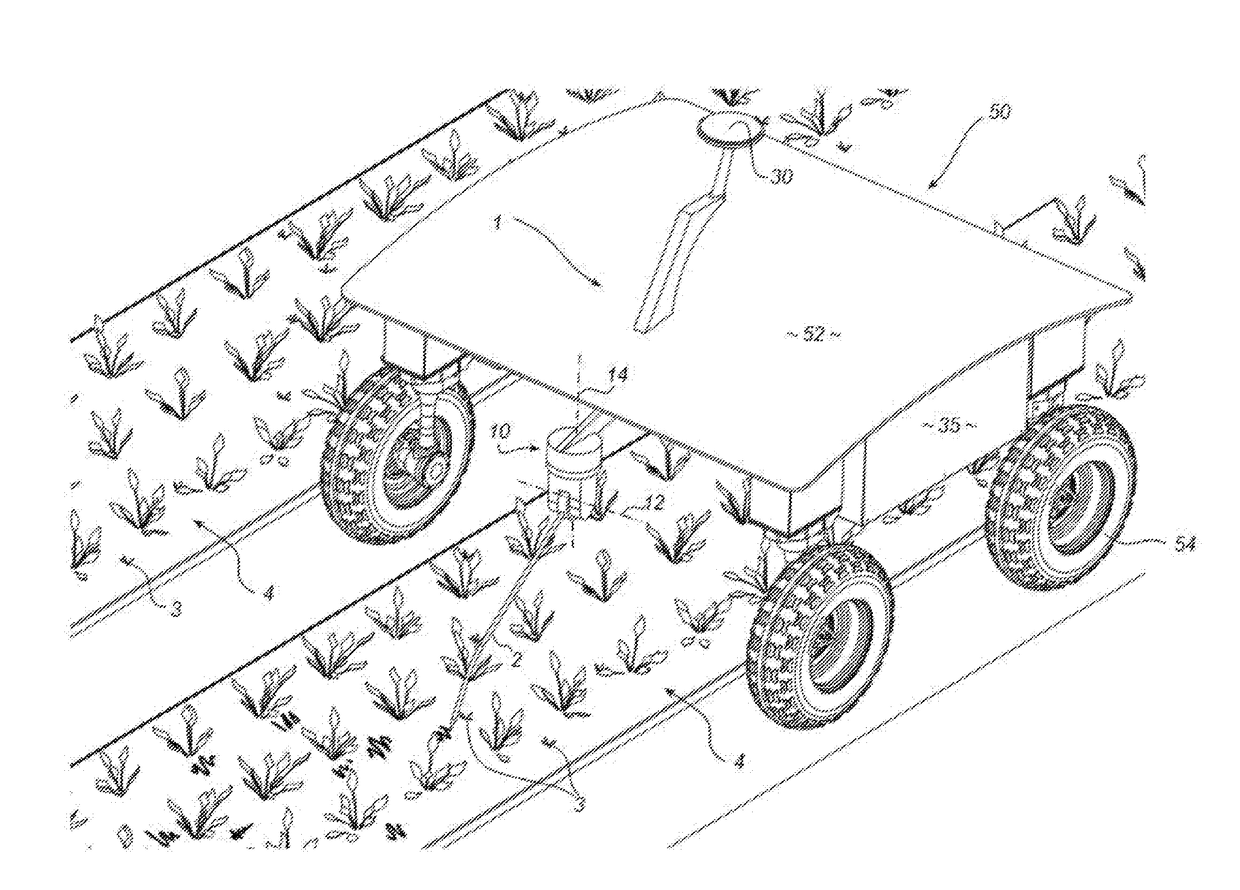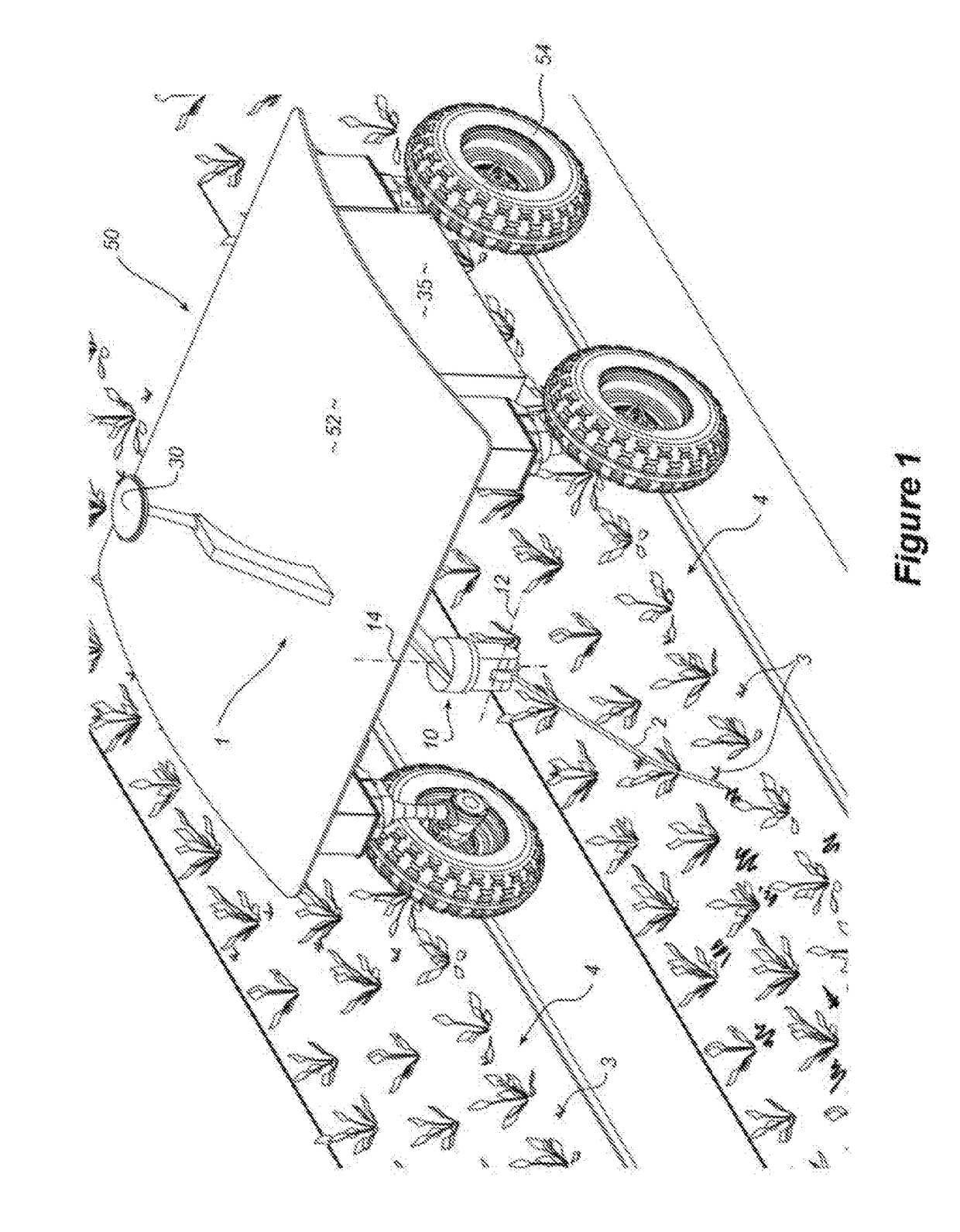Automatic target recognition and management system
- Summary
- Abstract
- Description
- Claims
- Application Information
AI Technical Summary
Benefits of technology
Problems solved by technology
Method used
Image
Examples
Embodiment Construction
[0080]Referring initially to FIGS. 1 and 2, the invention provides an autonomous weeding apparatus 1. The apparatus includes a tine formation 2 adapted to remove, dislodge or disrupt targeted weeds 3 as the tine is drawn along a planted row or seed bed 4.
[0081]A tine support assembly 10 is adapted to support the tine 2 for movement in a generally vertical direction about a horizontally oriented first control axis 12. In this way, the tine is movable in use between a downwardly oriented engaged position (as shown in FIG. 1) wherein the tine contacts or penetrates the ground surface for removal or disruption of the targeted weeds, and an upwardly oriented disengaged position wherein the tine is substantially retracted from the ground surface. The tine support assembly 10 is further adapted to support the tine for movement in a generally horizontal direction about a vertically oriented second control axis 14. In this embodiment, the tine support assembly takes the form of a turret prov...
PUM
 Login to View More
Login to View More Abstract
Description
Claims
Application Information
 Login to View More
Login to View More - Generate Ideas
- Intellectual Property
- Life Sciences
- Materials
- Tech Scout
- Unparalleled Data Quality
- Higher Quality Content
- 60% Fewer Hallucinations
Browse by: Latest US Patents, China's latest patents, Technical Efficacy Thesaurus, Application Domain, Technology Topic, Popular Technical Reports.
© 2025 PatSnap. All rights reserved.Legal|Privacy policy|Modern Slavery Act Transparency Statement|Sitemap|About US| Contact US: help@patsnap.com



